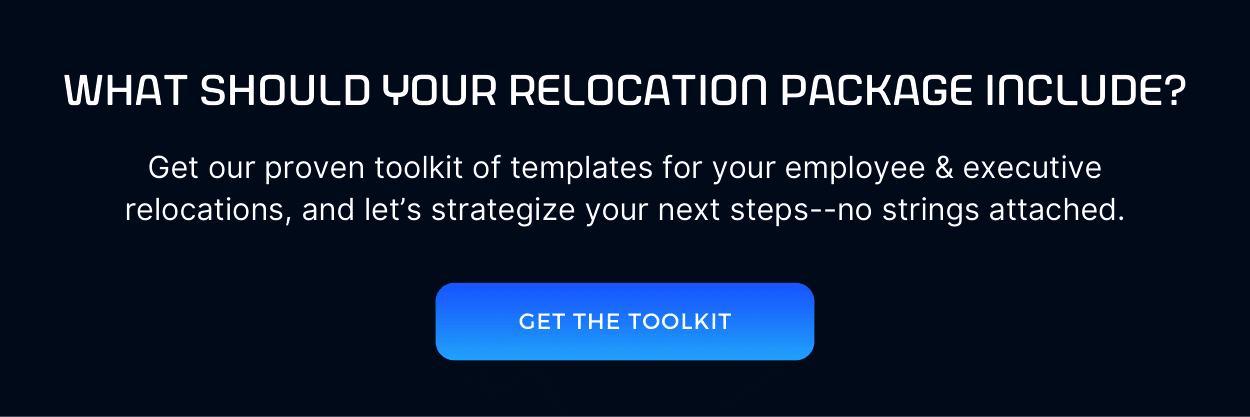Austin, the lively capital of Texas, has transformed into a magnet for business growth and expansion. With tech giants like Apple, Amazon, Google setting up major hubs and a thriving startup scene, it’s no wonder that companies across industries are flocking to Austin.
In this article, we’ll explore some of the major corporations choosing Austin and analyze the key factors making this city an ideal location for companies looking to relocate.
Notable Companies Moving to Austin
A host of high-profile companies have set their sights on Austin, spanning industries from tech to manufacturing. Here are some of the biggest names leading the corporate migration to Austin:
Tesla
The electric vehicle pioneer Tesla made waves in 2020 when it announced plans to build a major manufacturing facility just outside Austin. This $1.1 billion investment will produce Tesla’s Cybertruck and Model Y SUV, in addition to serving as a new engineering and design hub.
For Tesla, Austin’s tech talent pool, robust infrastructure, and business-friendly environment made it the perfect fit for the company’s newest Gigafactory. Moving to Texas also provides tax incentives and regulatory advantages that align with Tesla’s growth objectives.
Apple
Apple is expanding its presence in Austin with a new $1 billion campus that will accommodate 5,000 additional employees. The iPhone maker already has a well-established hub in Austin, with over 7,000 employees in the area.
This new investment underscores Apple’s confidence in Austin’s talent pipeline and the region’s growth potential. Proximity to the University of Texas and a welcoming approach to innovation have made Austin a strategic home for Apple. Apple also offers a generous relocation package for employees who are considering the move.
Google
As one of the early tech pioneers in Austin, Google has maintained a special connection with the city. The company has been rapidly expanding its footprint, including a recently opened 29-acre campus in downtown Austin.
Google’s investments in Austin now total over $300 million, housing expanded teams in engineering, sales and solutions development. The city’s rich talent pool in emerging technologies like artificial intelligence aligns seamlessly with Google’s focus areas.
Amazon
Amazon ramped up its presence in Austin by opening a major office building in 2018, providing space for 800 employees with room for further growth. This facility supports teams focused on Amazon Web Services, Alexa, Advertising and Amazon Fresh.
The e-commerce giant has been strategically tapping into metro areas with strong technical talent like Austin. By 2019, Amazon had over 5,600 employees in the Austin region, underlining the city’s importance to the company’s expansion plans.

Oracle
Oracle, a leading provider of enterprise cloud services, chose Austin for a major hub opening in 2018. This high-rise campus houses teams working on cloud engineering, software development, technical support and other strategic functions.
As a company transforming itself to focus on cloud-based services, Oracle’s proximity to Austin’s talent base in next-generation technologies is proving pivotal.
Charles Schwab
Financial services firm Charles Schwab announced plans in 2019 to build a massive regional campus in Austin, accommodating up to 10,000 employees. This $321 million investment will relocate operations focused on technology and client services.
For Charles Schwab, Austin’s rich talent pool, lower cost of living, and quality of life improvements over locations like San Francisco made it the optimal choice.
Dropbox
Cloud storage provider Dropbox joined the growing list of companies choosing Austin as a regional home. In 2019, Dropbox opened an office housing over 200 employees, with plans for further expansion.
Like many tech firms, Dropbox was attracted by Austin’s rich technical talent pipeline, provided by the University of Texas, area startups and technology hubs like the Capital Factory.
Home Depot
Retail giant Home Depot has tapped into Austin’s tech talent by locating a major software engineering hub there. With over 175 engineers based in Austin, the company is leveraging the city’s strengths in e-commerce, digital platforms and emerging technologies.
This allows Home Depot to infuse next-generation innovations into their operations and better cater to evolving consumer behaviors.
Black Ore
A rising star in the AI financial services sector, Black Ore launched in 2023 with an impressive $60 million in funding led by a16z and Oak HC/FT. The company chose Austin for its operations, creating high-quality tech jobs in the region.
Black Ore’s flagship product, Tax Autopilot, leverages proprietary AI integrated with federal and state tax codes to simplify tax preparation and review for CPAs. This innovative approach exemplifies the cutting-edge technology companies that are increasingly making Austin their home.
NXP
Netherlands-based semiconductor manufacturer NXP is exploring a significant expansion of its Central Texas operations. The company’s plans involve a $290.8 million investment to retool and align production with market demands at their existing Austin-area facilities.
This expansion is projected to bring a substantial $560 million annual economic boost to Austin, reinforcing the city’s growing importance as a hub for semiconductor manufacturing and advanced technology.
ZT Systems
In a major economic win for the Greater Austin area, ZT Systems—a global leader in advanced server solutions—acquired a cutting-edge manufacturing site in Georgetown, TX. The facility is expected to employ approximately 1,500 skilled individuals in 2024.
This significant investment underscores Austin’s growing importance in the cloud computing hardware sector and highlights the region’s ability to attract manufacturing operations that require highly skilled technical talent.
RealCold
A subsidiary of Related Fund Management LLC, RealCold is making waves with its $65 million facility in Lockhart, TX, just outside Austin. This investment is part of the company’s $1 billion commitment to the cold storage industry.
Approved for incentives, the Lockhart facility plans to employ over 100 people by early 2025, demonstrating how Austin’s business-friendly environment extends to supporting infrastructure and logistics operations in the surrounding areas.
What’s Fueling the Migration to Austin?
It’s clear that companies across the spectrum are relocating core operations or expanding regional footprints within Austin. But what specific factors about companies in Austin TX are driving this influx?
Flourishing Startup Ecosystem
Austin boasts a vibrant, rapidly growing startup scene centered around technology and innovation. Incubators like Capital Factory and MassChallenge provide resources for early-stage companies, fostering entrepreneurial energy.
Events like the massive South by Southwest Festival bring together startups and investors from across the globe. Established tech giants gravitate toward such hubs of innovation.
Access to Technical Talent
With the University of Texas acting as a feeder system, Austin offers access to some of the nation’s top young technical minds. Startups further strengthen the talent pool, along with global tech companies with expanding Austin footprints.
This concentration of technical aptitude, both emerging and seasoned, is a pivotal draw for companies seeking software developers, data scientists, designers and engineers.
Business-Friendly Climate
Texas provides companies with advantages including the absence of state income tax and more affordable operating costs compared to coastal hubs like San Francisco.
Austin offers financial incentives for relocating firms as well as regulatory policies designed to accelerate growth. The city’s cooperative approach and focus on economic development produce a fertile climate for business expansion.
Quality of Life
Austin’s vibrant culture, thriving food scene, outdoor recreational opportunities and mild climate all elevate its quality of life. This allows companies to attract talent who might otherwise hesitate to move to Texas, while also enhancing employee satisfaction.
Lower Cost of Operation
Companies relocating to Austin benefit from significantly lower real estate costs for both commercial and residential properties compared to markets like San Francisco, New York, or Seattle. Operating expenses including utilities, taxes, and labor costs are also more competitive.
This cost advantage allows businesses to either reinvest savings into growth or pass savings on to customers, creating a competitive edge in their respective markets.
Strategic Central Location
Austin’s central location within the United States provides companies with strategic advantages for distribution, travel, and market access. The city sits at the intersection of major interstate highways connecting to other major Texas metros.
This positioning allows businesses to easily serve customers and partners across both coasts while maintaining shorter travel times to key markets throughout North America.
Affordable Housing
Despite rising housing costs, Austin remains considerably more affordable than coastal tech hubs like San Francisco, Seattle, and New York. This housing cost differential makes it easier for companies to recruit talent from more expensive markets, as employees can often upgrade their living situations while maintaining or improving their standard of living.
First-time homebuyers and young professionals find Austin particularly attractive, as homeownership remains achievable compared to many competing tech markets.
Connectivity and Infrastructure
With Austin-Bergstrom International Airport continuing to expand its global routes, and accessibility via major highways, railways and public transit, connectivity is optimized for business growth. Austin Energy provides reliable, affordable power from renewable sources.
Ongoing infrastructure development and strategic planning help strengthen Austin’s foundation as an ideal hub for operations.
Collaboration Opportunities
Between research institutions like UT Austin and a dense community of startups and major companies, Austin abounds with potential partners for collaboration. Fostering connections across companies, sectors and academia catalyzes innovation.
Diversity
While often considered a liberal oasis within Texas, Austin offers greater diversity of people and ideas compared to other major Texas metros. This diversity strengthens recruitment capabilities for companies seeking broader perspectives.
How Companies Can Facilitate Relocation to Austin
The influx of companies moving to Austin looks primed to continue as the city’s allure only expands. However, relocation brings its own set of challenges.
ARC Relocation helps smooth the transition with our Realtor Rebate Program. This provides financial assistance in the form of thousands of dollars for employees relocating to Austin, while connecting them with trusted realtors who understand the region’s housing market.

For many, finding the right home is the most stressful part of relocating to a new city, and our rebate program eases this burden.
Relocation specialists are another valuable resource we offer companies and employees making the move to Austin. These experts facilitate and expedite all aspects of relocation, taking the hassle out of moving.
With deep knowledge of Austin’s neighborhoods, schools, and housing options, they can match employees with their optimal areas and homes.
ARC Relocation has guided corporate moves for the likes of Apple, Samsung, Visa, and other major brands relocating operations to Austin. Our tailored services ensure a smooth transition.
Future Outlook for Business in Austin
Judging by current momentum, Austin’s appeal to companies across sectors shows no signs of slowing down. If anything, the tech explosion and influx of talent only reinforce the city’s stature for business growth.
Moving forward, Austin is poised to increase its national presence as a hub for innovation. The region’s quality universities will continue supplying exceptional talent to power new waves of development.
At the same time, urban planning initiatives to sustain Austin’s infrastructure, housing market and quality of life will ensure the city avoids potential pitfalls facing other overheated tech hubs like San Francisco.
Business leaders eyeing Austin can feel confident that the city offers sound fundamentals for expansion and a community ready to support additional development. With smart strategies, companies can leverage what makes Austin such a magnetic location.
For companies moving to Austin, ARC Relocation has the expertise and services to streamline the process. Contact us today to learn more about how we can help make your company’s move efficient and seamless.

















